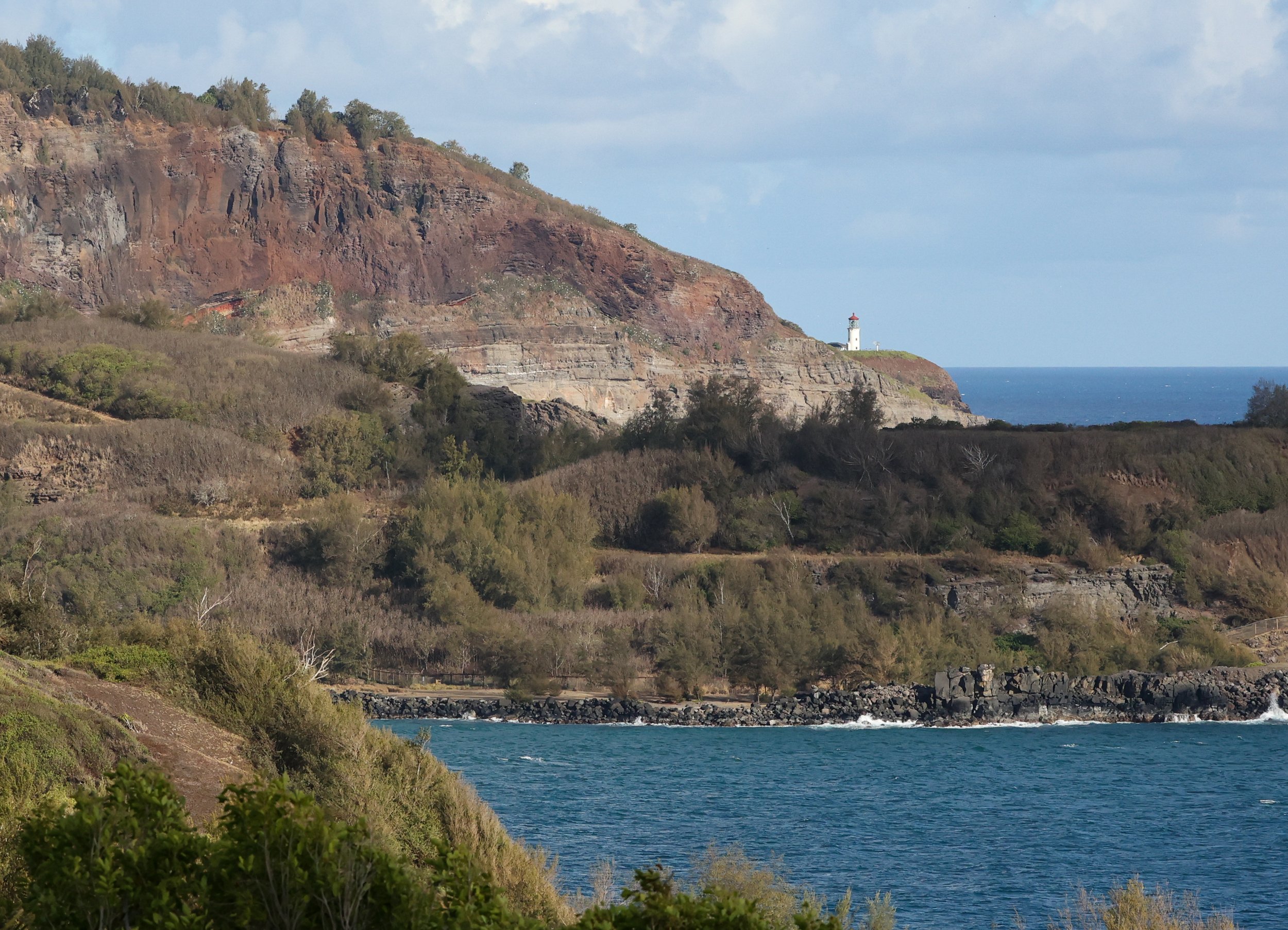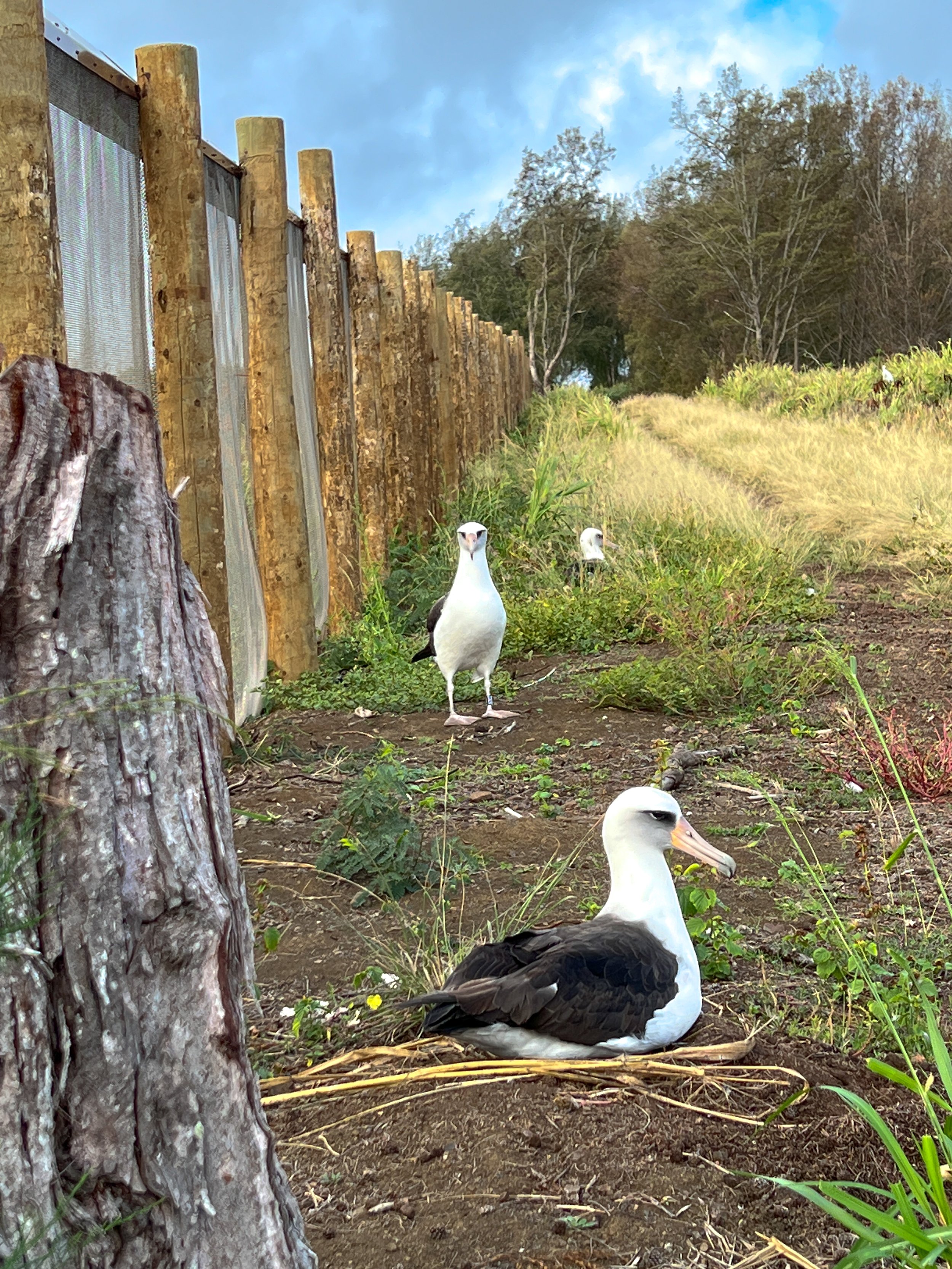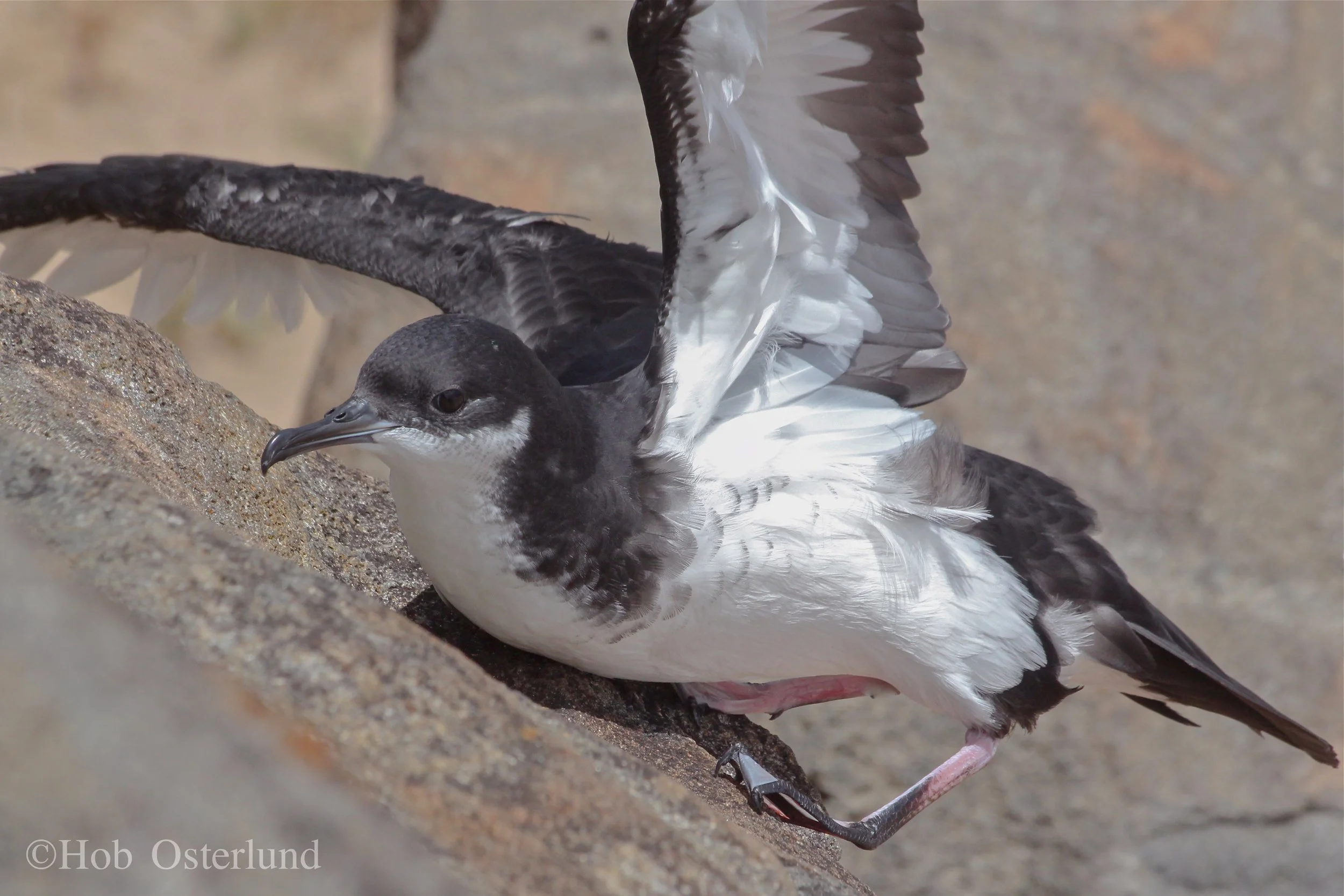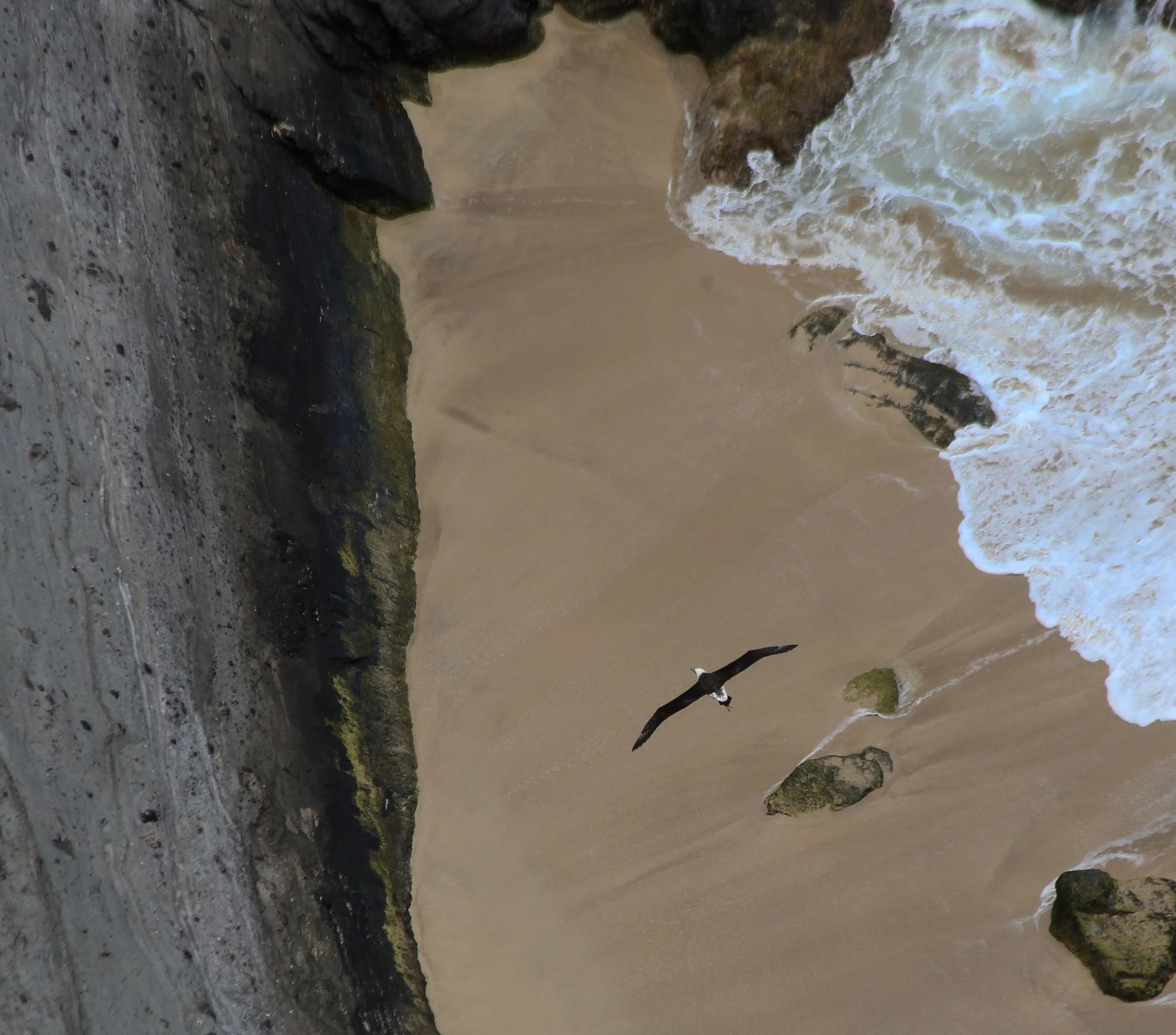Safer Seabirds: A Conversation with Thomas Daubert
By Safina Center Conservationist-in-Residence Hob Osterlund
Thomas Daubert, Executive Director, Friends of Kauai Wildlife Refuges, and Hob Osterlund, Safina Center Conservationist in Residence. ©Hob Osterlund
Thomas Daubert is the Executive Director of Friends of Kauaʻi Wildlife Refuges, the nonprofit Friends Group that supports the environmental and wildlife conservation, historic preservation and community education programs of the Kauaʻi National Wildlife Refuge Complex, which is administered by the U.S. Fish & Wildlife Service and includes Kīlauea Point National Wildlife Refuge (KPNWR), Hanalei National Wildlife Refuge and Hulēʻia National Wildlife Refuge. Safina Center Conservationist-in-Residence Hob Osterlund spoke with him about the recent completion of a new predator exclusion fence at KPNWR.
Hob Osterlund: It is exciting to learn that the new predator exclusion fence at KPNWR on Kauaʻi is complete. Please tell us a bit about it.
Thomas Daubert: Yes, this is wonderful news! The U.S. Fish & Wildlife Service worked with partners including Pacific Rim Conservation and Pono Pacific to develop and install a 2.1 mile perimeter fence, which will provide a new level of protection for 168-acres of the Refuge. The protected area spans from Nihokū and the Kīlauea Point Overlook, to the tip of Mokolea Point.
KPNWR from the east. Predator fence can be seen just above the shoreline. ©Hob Osterlund
HO: That’s fantastic. We all hope for much-improved protection for the nesters of this vital seabird colony. Why is such a fence necessary for the tens of thousands of seabirds who nest within the Refuge?
TD: The technology of the new predator exclusion fence was developed in New Zealand and is designed to keep out predatory mammals—all of which are introduced and non-native to Hawai’i—such as cats, pigs, dogs and rodents. It is designed to keep them from jumping or climbing over, digging under, or squeezing through. It has such a tight mesh that not even a tiny baby mouse can get in.
Predator fence at KPNWR. ©Hob Osterlund
HO: Several species nest within this vital wildlife habitat including the ʻā (red-footed booby) and koaʻe ʻula (red-tailed tropicbird), which–thankfully–are thriving. However, the fence was introduced in particular for other species including the ʻaʻo (threatened Newell’s shearwater), ʻuaʻu (endangered Hawaiian petrel), and mōlī (near-threatened Laysan albatross) that even more urgently need our protection. Which predators have been the most worrying?
Aʻo (Newellʻs shearwater) fledgling. ©Hob Osterlund
TD: Cats pose a significant threat to all of our native ground-nesting birds and, sadly, are now found across the entire island of Kauaʻi, including all the way up into the interior mountains, which are the primary habitat areas for ʻaʻo and ʻuaʻu. Indoor cats are wonderful pets and companion animals. However, free-roaming and feral cats are innate hunters that instinctively kill, even when they are well-fed. The experience of witnessing a cat predation is heart-wrenching. They rip apart smaller seabirds such as shearwaters and petrels. They also kill—though not necessarily eat—mōlī chicks. In addition, last albatross nesting season before the fence was completed, feral pigs broke into the Refuge and destroyed nearly seventy mōlī nests. The goal is to exclude all of these predators with this new fence, which is the largest of its kind in the Hawaiian Islands.
HO: I am familiar with the one at Kaʻena Point on the island of Oʻahu. The population of wedge-tailed shearwater nests there quadrupled a few years after a similar fence was constructed.
TD: Yes, that is a great success story. These types of predator exclusion fences are primarily used on islands where destructive mammals have been introduced. They have been proven to be effective in New Zealand, Australia and Mexico—in addition to here at KPNWR, where the original Nihokū Ecosystem Restoration Project was introduced in 2012. We look forward to similar success with our larger fenced area and the possibilities of future conservation programs that can happen in this newly-protected space.
Predation by feral pigs will be prevented with new predator fence. ©Pacific Rim Conservation
HO: What factors could prevent success?
TD: Here on the rainy north shore of Kauaʻi, vegetation grows quickly. We have to be diligent year-round to keep trees, grasses and other vegetation from growing too tall or too close to the fence, which would compromise its effectiveness. A single tree that touches the fence could create a thoroughfare for mice, rats, and cats. Then, once inside, each of these species can reproduce at astonishing rates. The final phase of implementation, which is occurring as we speak, is the removal of all the predators from within the fence. Then, it all boils down to having the funding and personnel resources needed to sustain this amazing protection.
HO: What’s the optimal long-term goal?
TD: Our goal is a safe haven for hundreds of thousands of nesting seabirds. Safe not only from all predators, but from rising sea levels that are already threatening birds on low-lying Pacific atolls.
HO: How can readers help?
TD: Mahalo (thank you) for asking! For folks who live on Kauaʻi, we have opportunities for volunteers to support the maintenance of the Refuge and the areas around the fence. Our U.S. Fish & Wildlife partners are also looking for team members. We share these opportunities within our newsletter and website [www.kauairefuges.org]. If you live elsewhere, we are also so grateful for friends across the country who help support our mission by making a donation or joining us as a member [at www.kauairefuges.org].
In addition, all of the proceeds of our Nature Store sales support our mission. You can shop with heart while visiting us at Kīlauea Point National Wildlife Refuge or at our online store https://friends-nature-store.myshopify.com/
Native seabirds have nested here without predators for millennia. Then, humans arrived—bringing mammals that kill birds. It is up to each of us to help protect species that have nowhere else in the world to nest, rest, feed and thrive. We have the honor of serving as stewards of these special protected spaces and are so grateful to have friends across the country and around the world who follow us online and support our work. Mahalo Hob for this opportunity to introduce our work to the amazing Safina Center followers!
Laysan albatross flying over beach at KPNWR. ©Hob Osterlund
Learn more about Daubert’s and the Friends of Kauaʻi Wildlife Refuges’ work at www.kauairefuges.org.






